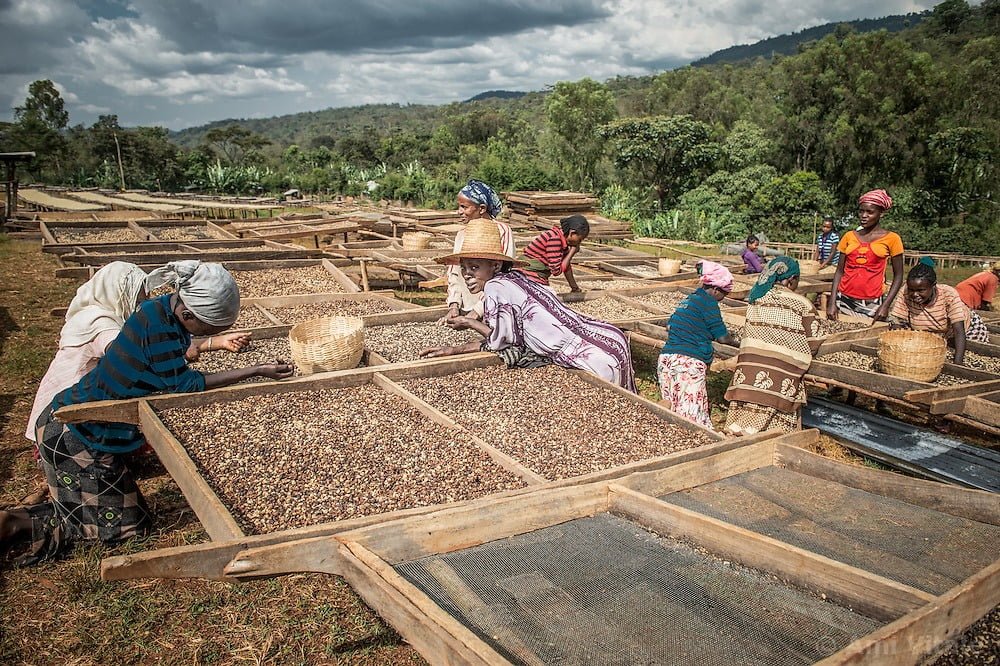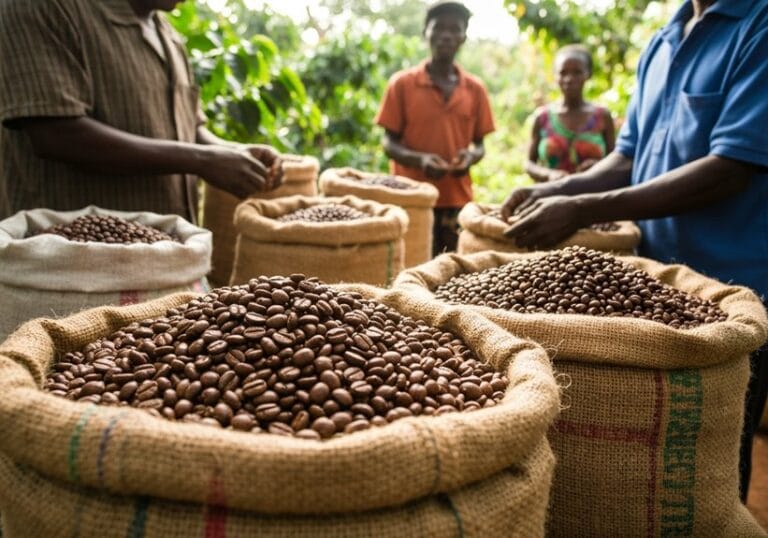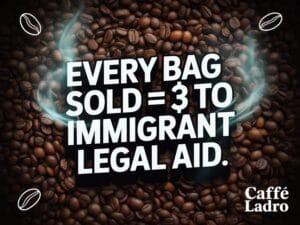Starbucks gets its coffee beans from a wild mix of places, like Colombia, Brazil, and Ethiopia—talk about a world tour in a cup! They’re super picky, only using 100% Arabica beans, which are like the fancy pants of coffee. Plus, they guarantee farmers get treated right through their ethical sourcing practices. It’s all about coffee with a conscience! So, if you’re curious about how all this plays out in the coffee world, keep on exploring!
Key Takeaways
- Starbucks sources coffee globally from over 30 countries, including regions in Latin America, Africa, and Asia-Pacific.
- The richest Arabica beans are primarily sourced from Colombia and Brazil, while Ethiopia adds floral notes.
- Indonesia contributes earthy flavors, enhancing the diverse flavor profiles of Starbucks coffee.
- Starbucks adheres to C.A.F.E. Practices for ethical sourcing and sustainability in coffee production.
- The company supports over 400,000 farmers worldwide with training and financial transparency initiatives.
Global Sourcing Regions
When you take a sip of your Starbucks coffee, you might not realize it, but that cup represents a global adventure—like a world tour for your taste buds!
So, where does Starbucks source their coffee? They have their hands in pots from Latin America to Africa and even Asia-Pacific!
Colombia and Brazil deliver the richest Arabica beans, while Ethiopia, the birthplace of coffee, adds some fabulous floral notes. And let’s not forget Indonesia’s earthy wonders! Starbucks purchases around 3% of the global coffee supply with beans from over 30 countries.
Colombia and Brazil bring rich Arabica flavors, while Ethiopia and Indonesia add floral and earthy notes to your coffee adventure!
It’s a wild blend of flavors—like coffee from all over the world crashed a party in your mug! With beans from over 30 countries, Starbucks makes sure your coffee experience is anything but bland.
Just imagine the caffeine-fueled conversations those beans would have!
Coffee Bean Types and Quality
Coffee bean types and quality play a huge role in that beloved Starbucks cup of joe—seriously, it’s like the secret ingredient for a perfect morning!
When wondering where does Starbucks get their coffee beans, it’s mostly 100% Arabica beans, which have this smooth taste that varies from fruity to chocolatey. So fancy, right? Interestingly, Arabica coffee originated in Ethiopia, where the greatest genetic diversity exists, which contributes to the unique flavor profiles of the beans used.
And let’s chat about Starbucks coffee country of origin—these beans come from all over Latin America!
The coffee bean varieties used by Starbucks aren’t just any beans; they emphasize quality with blends that highlight different flavors. Why? Because nobody wants a bitter brew!
Their roasts, whether light or dark, create unique experiences—think bright fruity notes vs. bold, smoky flavors. Brewing methods contribute significantly to the overall caffeine content, enhancing that morning magic!
Ethical Sourcing and Sustainability Practices

Starbucks isn’t just about brewing a great cup of coffee; they’re all about doing right by the folks who grow those beans too.
So, where does Starbucks get their coffee? Well, they’re committed to an ethical coffee sourcing standard called C.A.F.E. Practices, launched in 2004—you know, to make sure farmers aren’t left in the lurch.
They actually check farms for worker rights, financial transparency, and even biodiversity stuff. Crazy, right?
They support over 400,000 farmers worldwide, giving them tools and training, so those farmers can thrive instead of just survive.
Plus, Starbucks coffee production focuses on sustainability, with a big emphasis on treating the earth nicely!
They keep things eco-friendly and actually care about how their beans are grown—talk about a feel-good cup of joe!
Frequently Asked Questions
How Does Starbucks Ensure the Freshness of Their Coffee Beans?
Starbucks guarantees coffee bean freshness through meticulous roasting schedules, advanced packaging technologies, and proximity of roasting operations to distribution centers. This direct control minimizes transit time, guaranteeing ideal freshness from the moment beans are processed until they reach cafes.
What Are the Typical Roasting Profiles Used by Starbucks?
Starbucks typically uses three roasting profiles: Blonde Roast for mild flavors, Medium Roast for balanced richness, and Dark Roast for bold intensity. Each profile caters to distinct consumer preferences and guarantees a diverse coffee experience.
What Is Starbucks’ Approach to Seasonal Coffee Offerings?
Starbucks strategically launches seasonal coffee offerings to improve customer anticipation. By blending real pumpkin and fall spices into different beverages, they prioritize quality while expanding menu options, ensuring consistent engagement through innovative flavors and assorted formats.
How Does Starbucks Handle Coffee Bean Storage and Transportation?
Starbucks guarantees coffee bean quality by utilizing temperature-controlled storage, sealed packaging, and efficient logistics. They adopt moisture-proof containers, conduct regular inspections, and prioritize sustainability, fostering responsible practices throughout the storage and transportation processes.
Are Any Starbucks Coffees Organically Certified?
Yes, Starbucks offers organically certified coffees, such as the Organic French Roast and Organic Yukon Blend. However, these options are primarily available as packaged whole beans rather than in-store brewed selections for customers.
References
- https://www.dragonsourcing.com/starbucks-international-coffee-sourcing-strategy/
- https://www.starbucks.com/responsibility/sourcing/coffee/
- https://www.foodrepublic.com/1464262/countries-source-starbucks-coffee/
- https://sfkcorp.com/starbucks-supply-chain-management-optimizing-global-coffee-distribution-through-risk-mitigation-and-sustainable-practices/
- https://www.tastingtable.com/1701985/starbucks-whole-bean-coffees-ranked/
- https://www.starbucks.co.id/coffee/our-coffees
- https://athome.starbucks.com/product-category/ground


